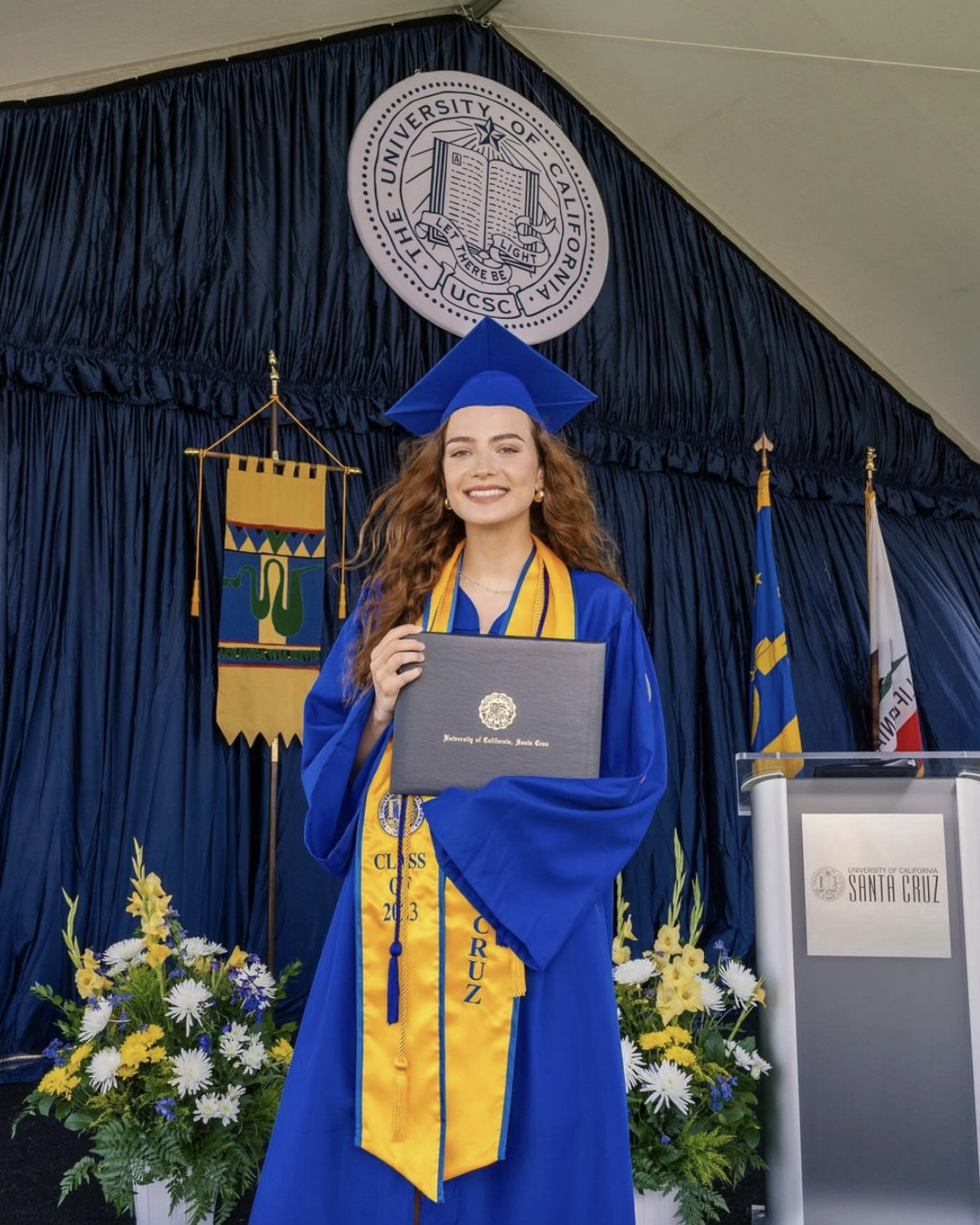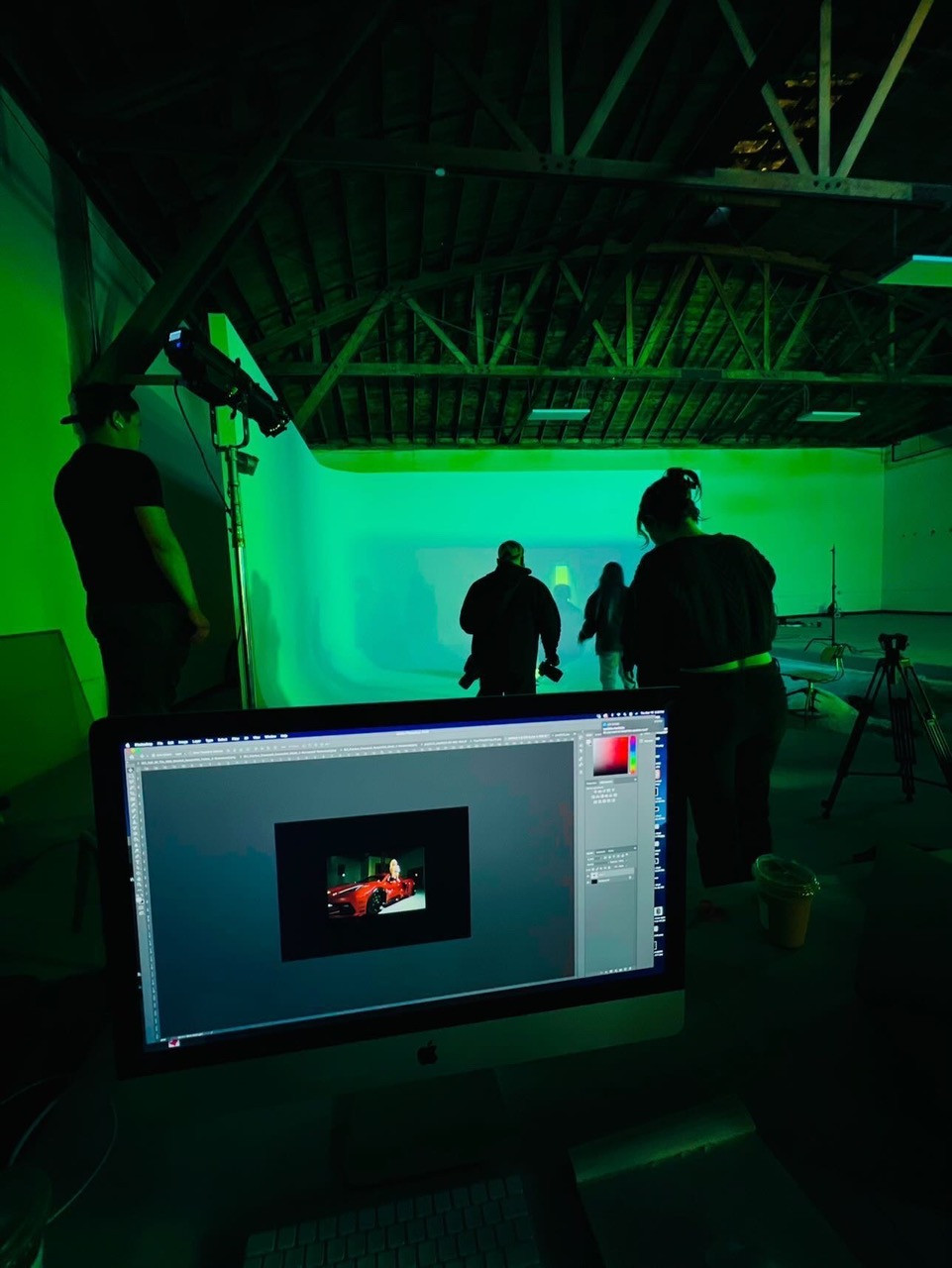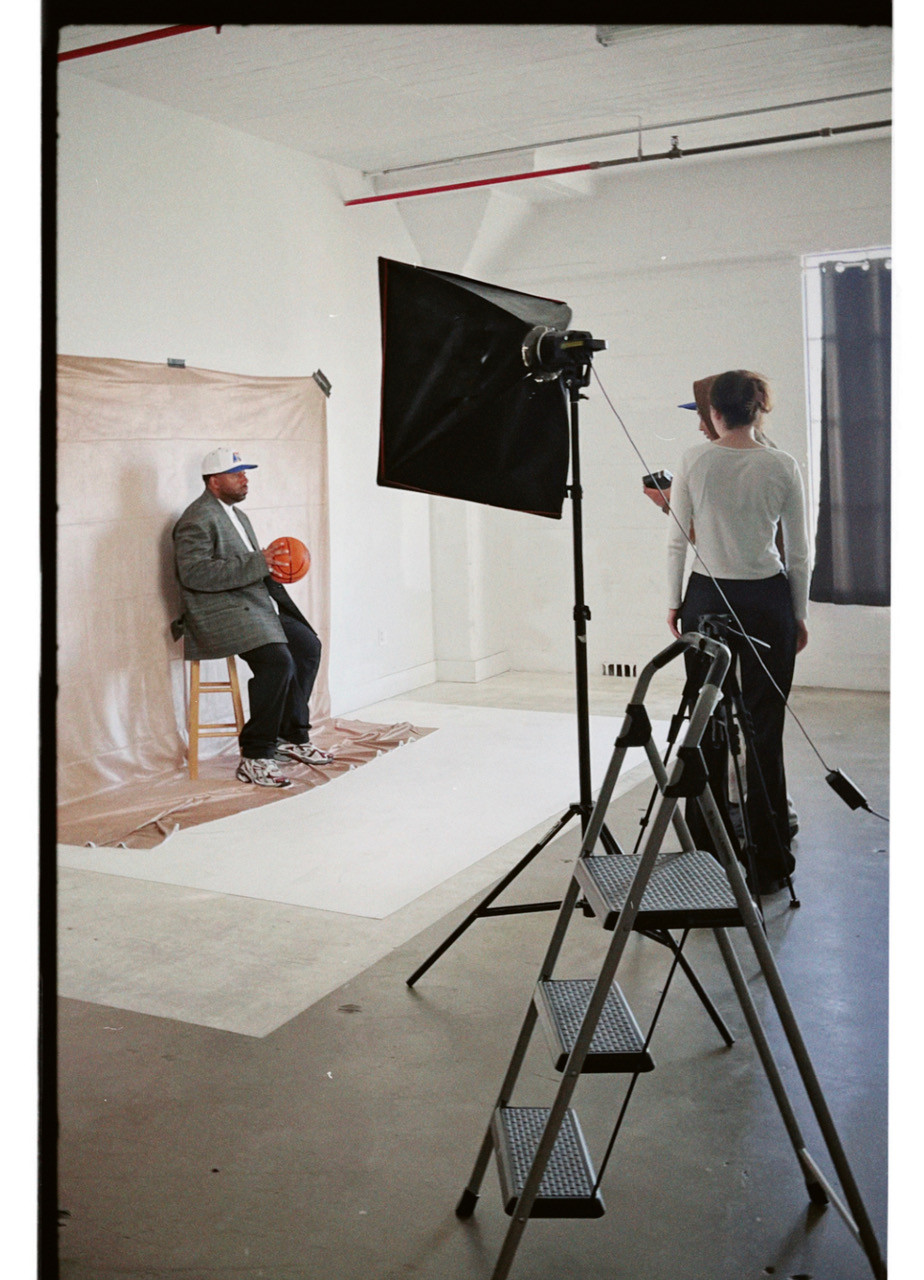Creativity means constant work and exploration, he says Caesar’s TaniaCreative Director at an AI startup in New York. In 2017, Cezara went to the USA to attend courses at the California College of Arts, majoring in photography. He later transferred to the University of California, Santa Cruz, where he graduated in 2023 with a major in art history and visual culture. He has worked on projects for Kanye West, fashion house Vetements, Beyonce’s writer and Takashi Murakami.
He’s currently working on an app currently only available in LA and NYC that uses an algorithm developed in-house to send users to events and activities with strangers, with the goal of facilitating in-person meetings and emphasizing the importance of real connections.
“In every project, I try to push my limits, develop a clear vision and translate it into an authentic and memorable experience. Creativity in this context can be understood as a search for unusual worlds to live in,” he says Tania.
What is the creative industry like in the US, what were the challenges and how did it adapt to cultural differences, he tells Caesar’s Tania in the lines below.
The decision to go to the USA
When I think of Romania, I remember all the moments that formed me: high school, my first camera, my first attempts to express my creativity. I grew up in an environment where, although there may not be as developed a cultural infrastructure as in other parts, I found inspiration in everything that surrounded me – from the sunsets in Sibiu to the small details of everyday life. However, once I started exploring my passions, I felt the need to move on, to get out of this familiar zone and seek new perspectives.
At 18, I took the decisive step and left for the United States. In 2017, I was admitted to the California College of the Arts in San Francisco, a city where creativity pulsates in every corner. The contrast between Romania and the United States was huge – from the cultural dynamism and diversity of ideas, to the resources we had at our disposal. But even though I received a scholarship, the reality of private college costs quickly became too much of a challenge. After a year, I realized I needed to make a change and decided to return to Europe.
What followed
Romania welcomed me again, but this time with a new perspective. During the year I spent at home, I started to refine my portfolio and try to expand my career, further from Romania’s borders. From here began a crucial stage: the search for opportunities in Paris. I sent over 100 emails to fashion houses and agencies, and within a month I found myself in the middle of the fashion industry, having the opportunity to photograph the fashion show in Paris for Vetements. This experience opened up new horizons for me and connected me with people like Takashi Murakami, who guided me and later became one of my mentors and gave me a platform to develop my creativity.
Returning to the United States and continuing his studies at the University of California, Santa Cruz, meant a new beginning. In 2019, the pandemic changed everything. During the period of isolation, I compiled all my photos into a book, which through a series of unexpected events – being very vocal about its appearance online – ended up in Kanye West’s personal photographer. This was the turning point that brought me recognition and unexpected opportunities.
The college experience
It definitely opened doors that would not have been accessible from Romania. Because the college offered me the option to take classes online, I moved to Los Angeles, where the opportunities in visual culture are much greater than in San Francisco. That’s where I got to meet Kanye West, get invited to Oscar after-parties, collaborate with Beyonce’s writer, and work on projects with J. Cole and Digga D.
Key moments in your journey
The most important aspect of my career has been the people who helped me – people I reached because of the place and context I was in the US. I don’t think I could have gotten to these positions without the community I had around me. I want to highlight the importance and dependence we have on each other. I didn’t get here alone; it was a constant choice of people around me to help me. In exchange for opportunities, I worked hard.
What projects are you working on now?
I am currently working in New York as Creative Director for an AI startup. I feel like I’ve gotten back to the essence of what drives me: connecting people. The platform we work on, 222, reflects my desire to facilitate in-person meetings, to rebuild real connections in a digitized world.
Looking back, I appreciate both the simplicity and cultural depth of Romania, as well as the dynamism and opportunities offered by the United States. If I had to draw a conclusion, I would say that both worlds played an essential role in my formation. Romania gave me roots, and the United States gave me wings. And now, every step I take combines the lessons learned from both cultures, with the hope that one day I will be able to bring some of that experience back home.
Advice for young people who want to work in the US creative industry
If I could go back in time and talk to my 13-year-old self, I would tell her how important it is to listen to those who encourage her more than anyone. I would tell her to have more faith in herself and step confidently into the gifts she has been given. For the next generation that doesn’t know where to start, I would look around and start counting the people who support me on my fingers. Start there and build with them.
The creative process in the USA
The memories of 2022, the year I moved to Los Angeles, are rewarding. I didn’t know exactly where life would take me, but I trusted that the decision to move was a good one. My favorite project of that year is when I photographed Dixon, Beyonce’s writer, who is signed to RocNation and was nominated for an Academy Award. I remember when I sent my portfolio to his agent and he replied with “your portfolio is crazy, he wants the shoot tomorrow.” The photoshoot was to take place the next day, so unprepared, I started brainstorming ideas.
Being in Los Angeles, I started walking around and noticed a lot of street art featuring Kobe Bryant, who died in a tragic accident four years ago. I immediately thought of the influence basketball has on the city. I quickly ran home and started putting the final idea together – like putting Dixon in the pose of an NBA player. I sent the idea to Dixon’s agent and he was very excited.
The creative process for any creative project, whether video or photo, involves several essential steps, each contributing to the final success. The first stage is brainstorming, where I gather all my ideas and inspirations. I am inspired by the environment, art, pop culture and the stories of the people I photograph. In Dixon’s case, the inspiration came from Kobe Bryant street art, trying to connect the history of the Oscars with the city and his passion for fashion. Symbolizing the power and influence of sports on the Los Angeles community, but also the different cultures that make up the city and give it influence in the world. This stage is crucial in establishing the theme and tone of the photo shoot.
Once we have established the concept, the next step is to create a pitch deck. An effective pitch deck should be clear and concise, providing a detailed vision of the project. Includes reference images, color palettes, proposed locations and styling examples. The goal is to convey my vision in a way that excites and convinces the client. For the project with Dixon, we created a pitch deck that presented the idea of portraying him as an NBA player, highlighting his connection to the basketball culture of Los Angeles that gives the city color, but at the same time to the pop culture that rose with basketball – basketball players and rappers collaborating, basketball players having their own clothing line, etc. The pitch deck is essential to succinctly expressing your vision. The fewer images and the more sensational invocations, the better. When I create a pitch deck I think: “What would I like for the person who has no idea what I’m talking about to feel what I want to convey?”
The next day I was in DTLA, where most of the major Los Angeles studios are, waiting for Dixon and his crew. In 3-4 hours we managed to finish the photo shoot. He liked the result so much that I was invited to the Oscars after party to meet his team. I remember that night I was unable to react – I thought it was all a dream. In the diffused light I was able to see Beyonce, who had been nominated for an Oscar and everyone was congratulating her. She felt comfortable because she was surrounded by friends and family. I felt like I shouldn’t be there, but somehow I ended up in Beyonce’s close friend group.
How do you train your creativity?
Creativity is an ongoing process, a daily exercise that requires both discipline and openness to new perspectives. Essentially, creativity is a state we enter every time we step outside. It’s a ritual you don’t create – you implement it in your everyday life. I exercise creativity constantly, challenging myself to find unique perspectives in seemingly mundane things.
An exercise that helps me is to combine elements from different fields – fashion, sports, music – and create connections between them. Everything we see and consume is visual culture, it was created for a purpose. Either to make us consume / buy that something, or to make us feel something. However you look at it, there is no clarity on the meaning and boundaries of visual culture. The desire to understand every image, to see everything clearly, to muster the cognitive control necessary to overcome visual constraints is an illusion.
The beauty of creativity is that no visual object exists in isolation. When we look at something, we also see what is around that thing, which reminds us of what we saw before. Creativity is not just an innate talent, but a process that requires constant work and exploration. It’s like when you go to the gym, you don’t expect to look like you imagine from the first day. In every project, I try to push my limits, develop a clear vision and translate it into an authentic and memorable experience. Creativity in this context can be understood as a search for unusual worlds to inhabit. What we have now may not be what we want, but it can be transformed and perceived from a new perspective.
Source: www.iqads.ro





